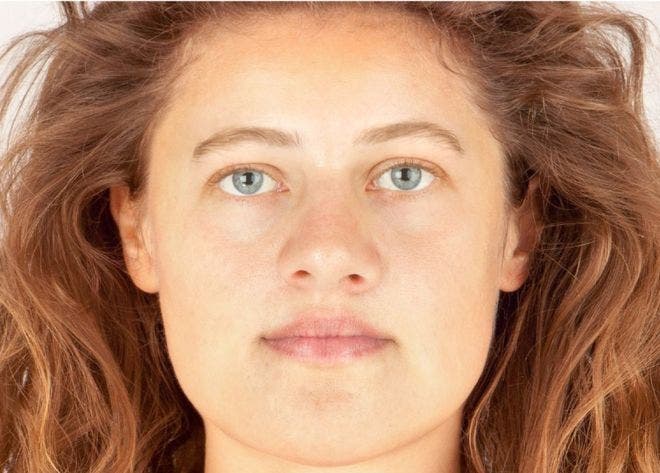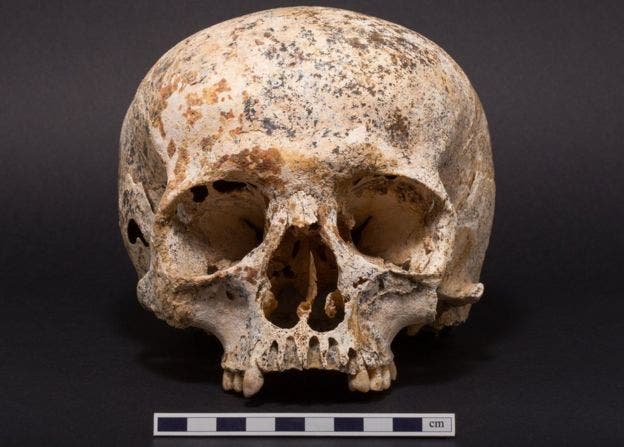
Image credits Hew Morrison.
Archaeologists and forensic artists have completed the facial reconstruction of a woman who died around 3,700 years ago in the Scottish Highlands. The woman is believed to have belonged to the Beaker culture, which became prominent in Europe in the Bronze Age for their metalwork and characteristic pottery.
The woman has been named Ava, an abbreviation of Achacanich, Caithness, where she was found in 1987. A specialist examination at the time of the discovery in the 1980s suggested that the skeletal remains were that of a young Caucasian woman aged 18-22.
She became the subject of a long-term research project by archaeologist Maya Hoole, as her burial stands out from others during the Bronze Age. Her bones were discovered in a pit dug into solid rock — which is highly unusual as excavating such a hard medium was extremely laborious — along with several artifacts. Even more puzzlingly, her skull has an abnormal shape, which some believe is the result of deliberate binding.
Forensic artist Hew Morrison, a graduate of the University of Dundee’s Forensic Art Msc programme, created the reconstruction. As the skull was missing a jaw bone, he had to calculate the shape of its lower jaw starting from her skull dimensions – as well as the depth of her skin. Morrison also used a chart of modern average tissue depths as a reference.
“The size of the lips can be determined by measuring the enamel of the teeth and the width of the mouth from the position of the teeth,” he explained.
Morrison added layer after layer of muscle and tissue over her face, drawing on a large database of high-resolution facial images to recreate her features. These were then tailored to the anatomy of her skull after constructing her facial muscles. The features were then “morphed together”, using computer software to create the reconstructed face.

Image credits Michael Sharpe.
“Normally, when working on a live, unidentified person’s case not so much detail would be given to skin tone, eye or hair colour and hair style as none of these elements can be determined from the anatomy of the skull,” Morrison said.
“So, creating a facial reconstruction based on archaeological remains is somewhat different in that a greater amount of artistic licence can be allowed.”
He added: “I have really appreciated the chance to recreate the face of someone from ancient Britain. Being able to look at the faces of individuals from the past can give us a great opportunity to identify with our own ancient ancestors.”
“When I started this project I had no idea what path it would take, but I have been approached by so many enthusiastic and talented individuals – like Hew – who are making the research a reality, Hoole added.
“I’m very grateful to everyone who has invested in the project and I hope we can continue to reveal more about her life.”


